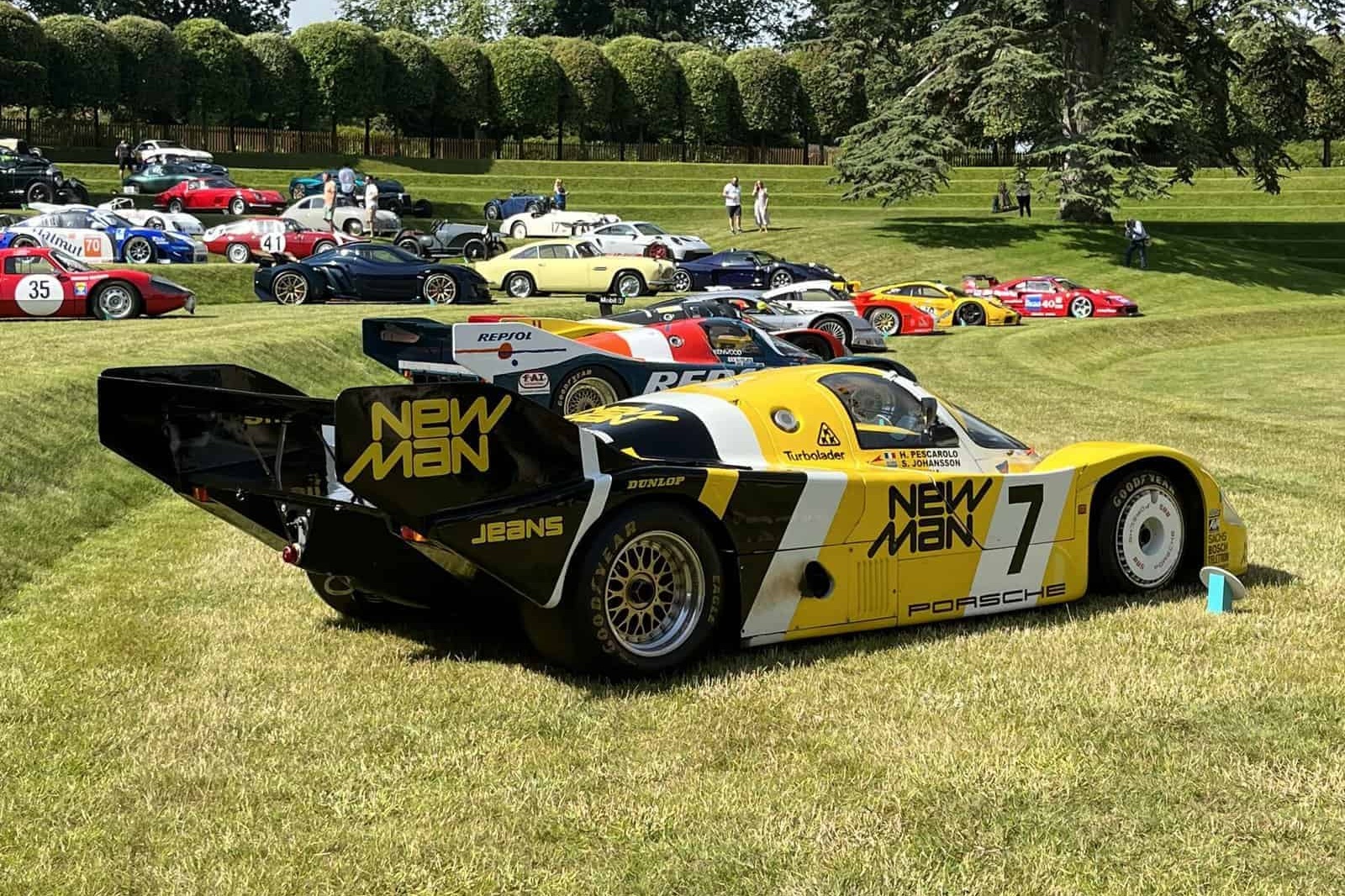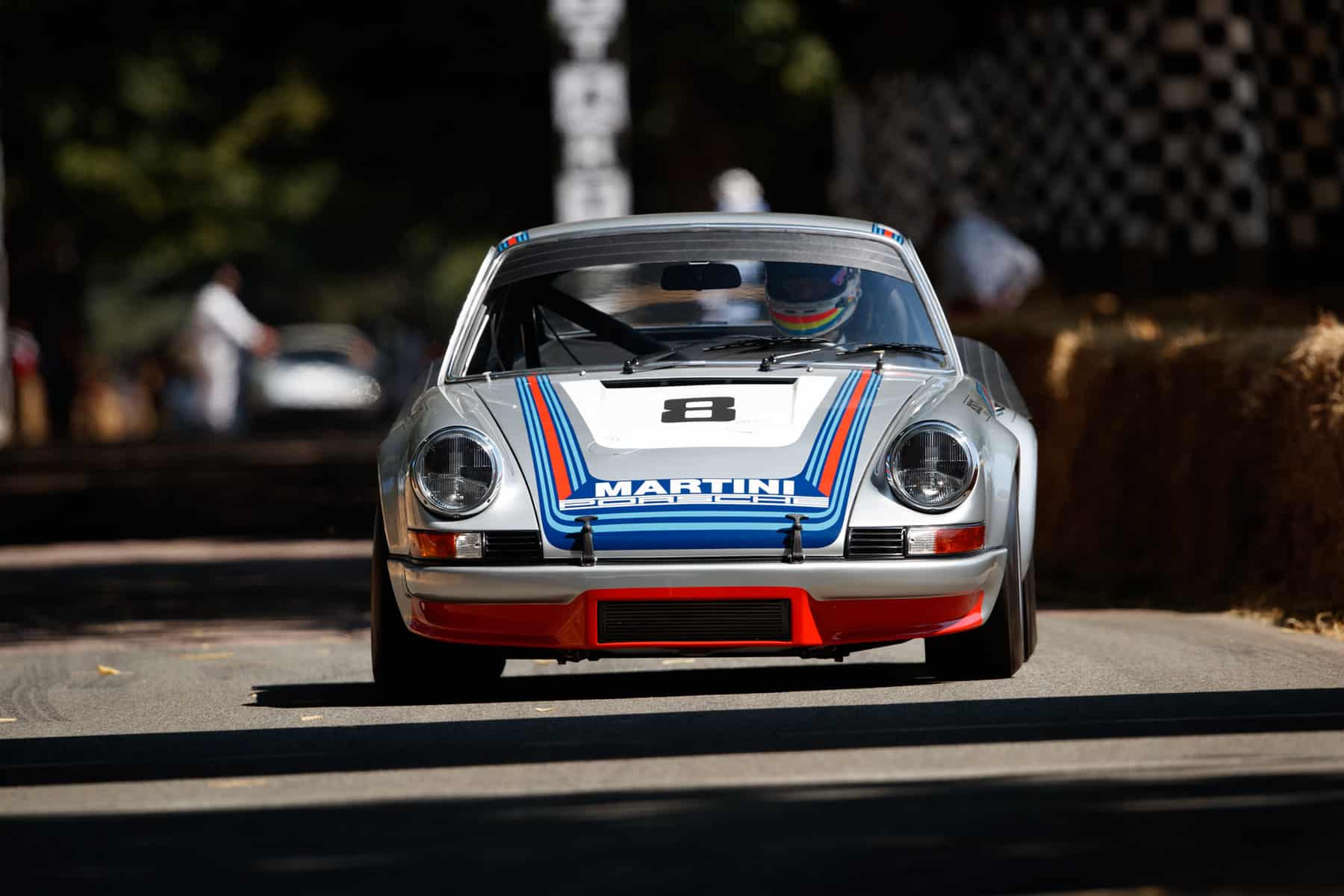Mastery – The Dynamic Connection to the Past
Interacting with a Brass Era Rolls as active, vibrant, working matter
BY: MILES C. COLLIER
A long time ago, I went on one of John Mozart’s wonderful Brass Era tours. I think we were based out of Meadowood Resort in Napa. The event was open to pre-World War I automobiles. I elected to bring my 1914 Rolls-Royce Silver Ghost with open Kellner coachwork.
The fascination of these old Brass Era cars is that in order to operate, they require much more management and driver involvement. Many things that the modern automobile does automatically were done by the driver in those days.
At any rate, I coasted the Rolls off the transporter and went through the rigamarole to fire it up. Like so many cars of this era, mine had been fitted with electric starting as a period upgrade. When I hit the starter button, there was a loud bang from under the bonnet, and silence. Never a good sign. Investigation revealed that when the starter pinion had been thrown forward into the ring gear by the solenoid, the impact literally knocked the nose off the cast-iron starter motor snout. There must have been a crack propagating there that chose this inopportune moment to make itself known. As no spare Rolls-Royce starter motors were to be had, I was faced with the prospect of starting the car for the next four days on the crank.
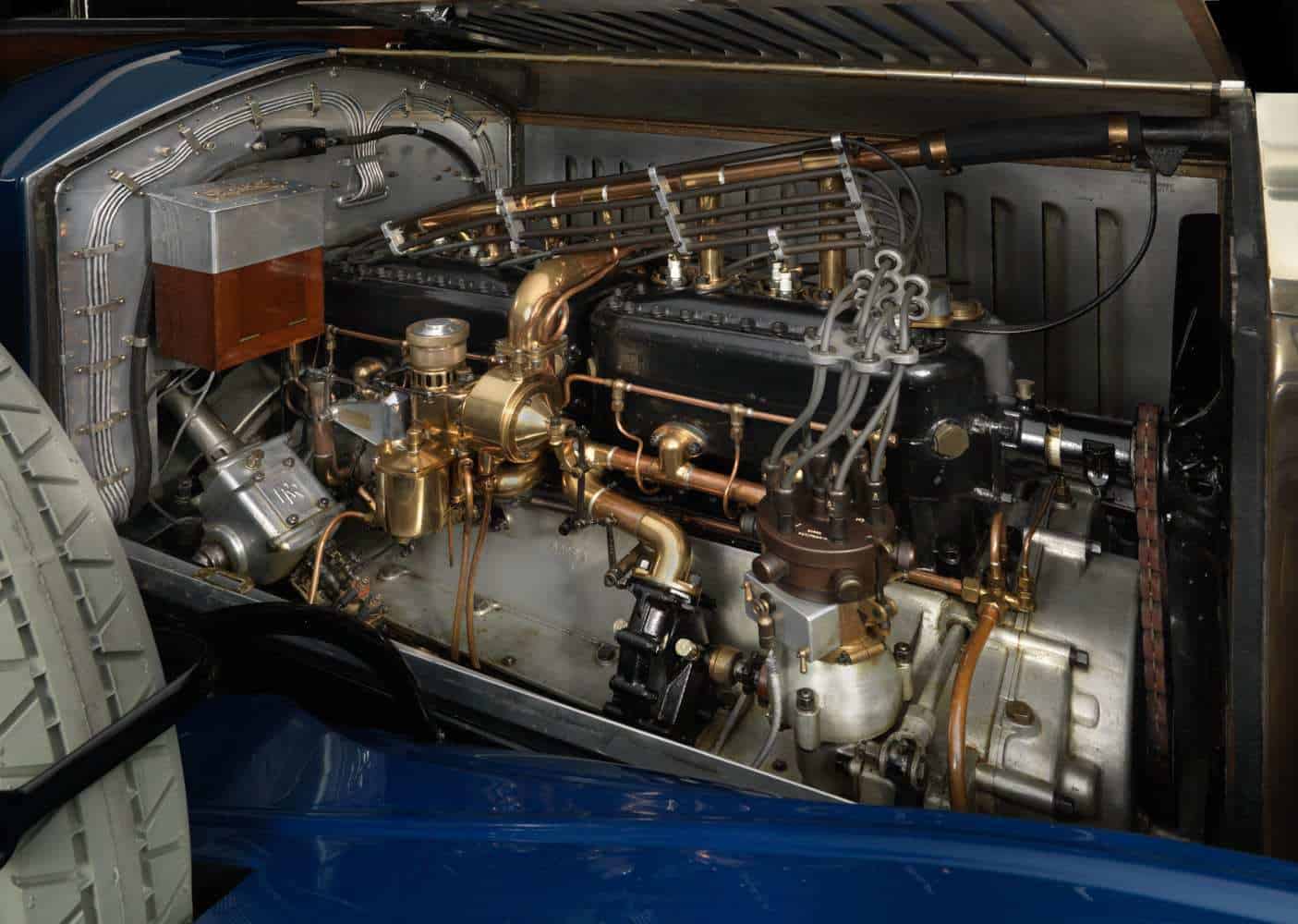
Starting the car from cold with the electric starter or on the hand crank is an exercise in choreography. First, open the fuel tap on the side of the chassis so you can pump up fuel tank pressure with the cockpit mounted hand pump. Two-and one-half pounds of air pressure does the trick. Set the mixture control lever on the steering column to “rich,” and crack the hand throttle. Move the ignition timing lever from “early” to “late.” Make sure that the ignition selector knob on the steering wheel hub is set on “0” so that no electrical power is going to the engine. Now, climb out of the car, open the right-side bonnet half. It is a piano hinge type so it lays flat over center on the left side nicely out of the way. Put a nickel coin under the float bowl enrichment lever and tickle the drain button. Raw gasoline should run out on the ground, and then pull the engine through compression for four or five rotations. This process ensures that fuel vapors have been sucked into the cylinders. Walk back to the cockpit, turn the ignition control knob from “0” to “battery.” As the “magneto” setting doesn’t make enough spark at cranking speed to ensure reliable starting, it is used only once the car is under way.
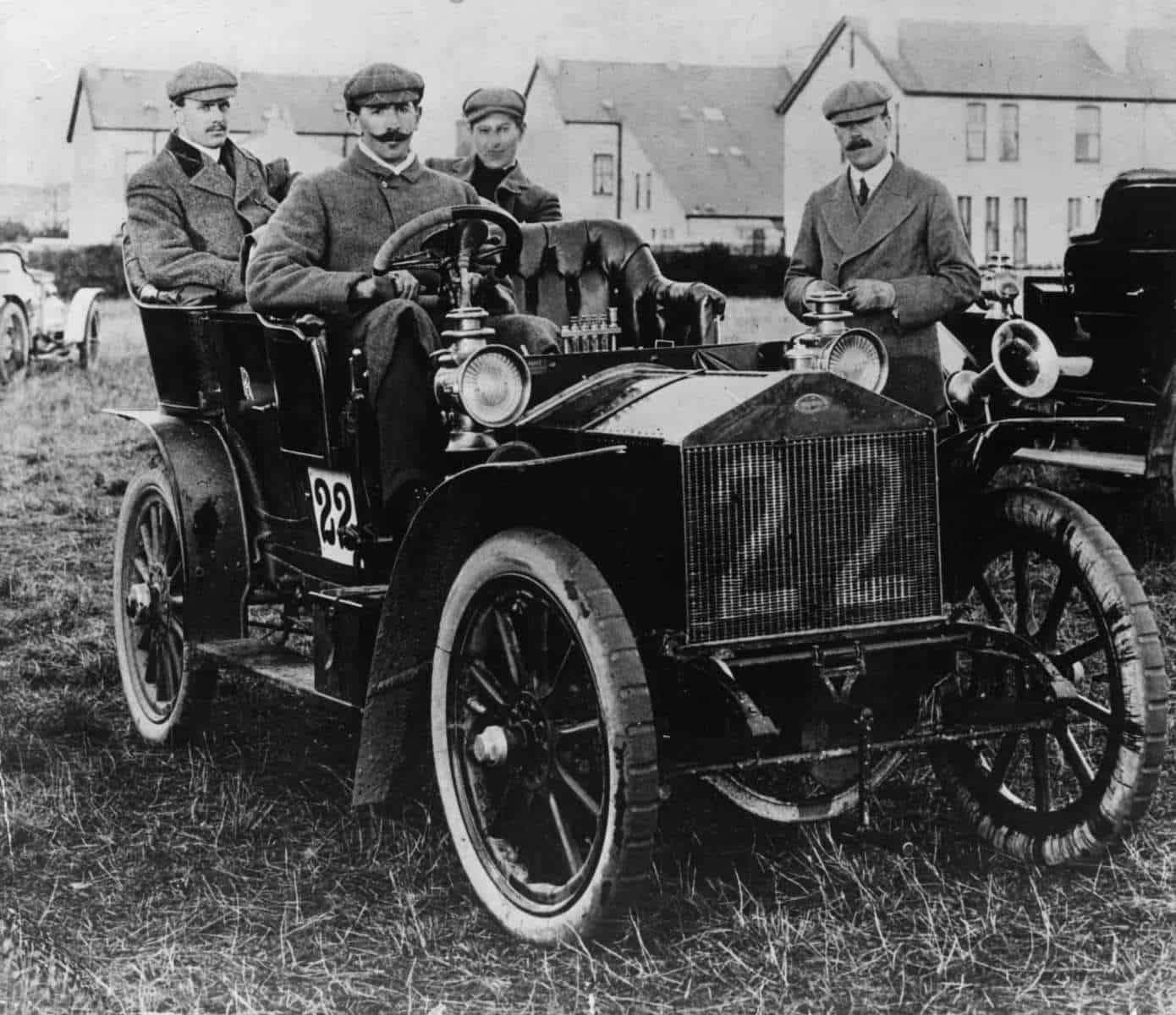
And now for the moment of truth. Walk nonchalantly back to the front of the car. Firmly grasp the starting handle and pull up briskly as you step away from the crank, out of danger from a potential kick-back. Assuming the ghost of Frederick Henry Royce is smiling, the engine immediately comes to six-cylinder life. Walk back to the steering wheel once more and advance the ignition timing two-thirds of the way towards “early.” Wander back to the open bonnet and inspect the works for leaks or other potential problems. Then remove the nickel coin from the top of the float bowl (which allows the float to resume its normal operating height), close and latch the bonnet, and mount up. You enter the car from the left and slide across to the driver’s seat on the right. Engage first gear, hand brake off, ease the clutch up and you’re away. After a few minutes, don’t forget to switch the ignition to “magneto” (six spark plugs firing) or “magneto and battery” (twelve spark plugs firing) as desired.
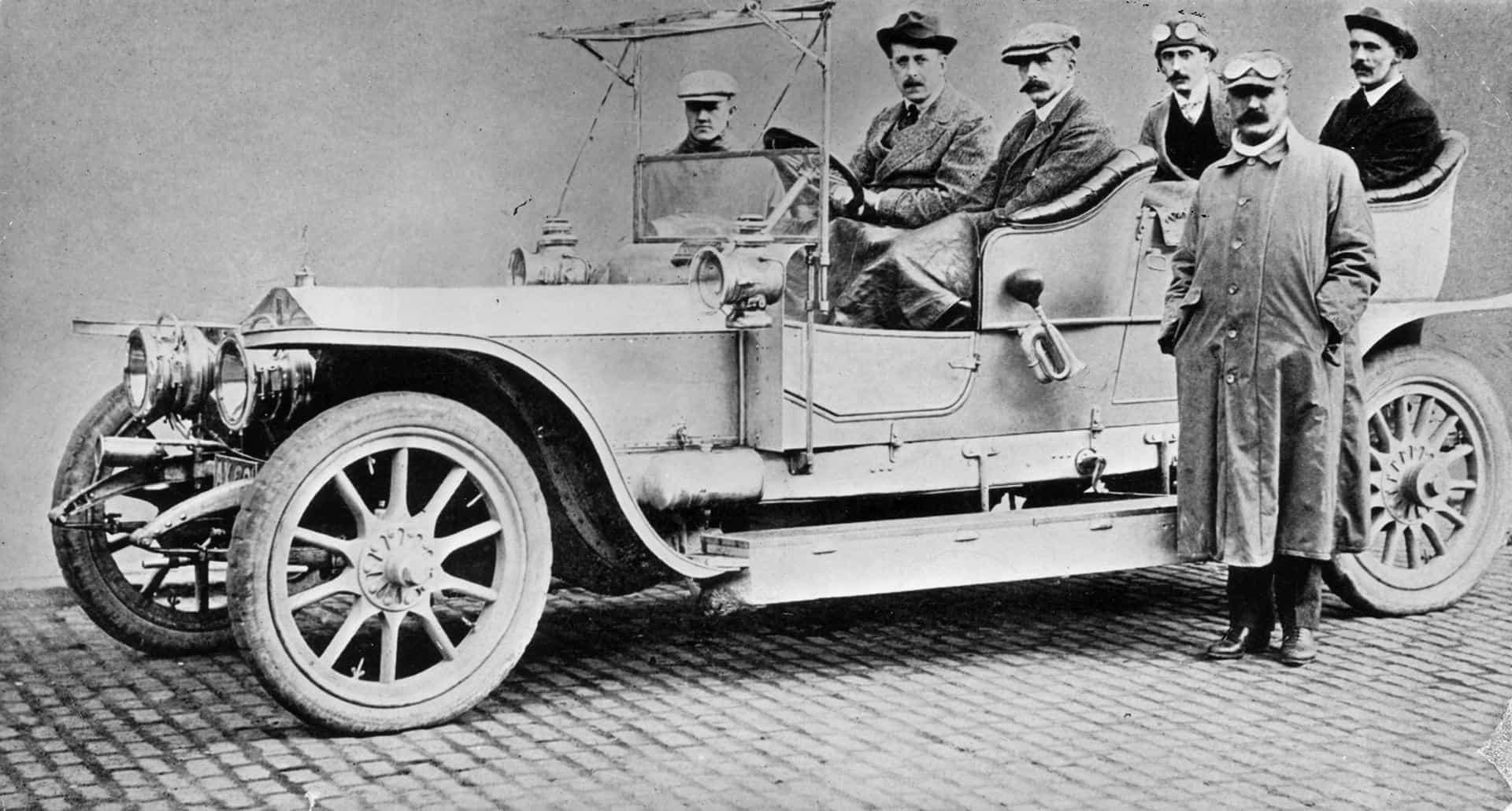
Now all that is required for a happy day on the open road is managing the cone clutch and the outside gear lever-operated, non-synchromesh or “crash” gearbox. And don’t forget, the main and only brakes are the two rear-wheel drums (and their shoes have sintered iron linings). They are activated with the outside hand lever next to the gear shift. That middle pedal on the floor is a driveshaft brake. Do not use it. It is for dire emergencies, preferably only after your life starts flashing before your eyes as we will see in a bit.
Particularly amusing is the ability to start the Silver Ghost from hot by what appears to be ESP. All that is required is to crack the hand throttle, retard the ignition, switch on, and then, when your audience least expects it, flick the advance lever to full advance and instantly back to the normal operating advance. With any luck, advancing the ignition caused one cylinder at top dead center to fire its residual gas vapors, and instantly the engine is running: no cranking, no electric starter grinding away, just instant purring life. The uninitiated are totally bedazzled.
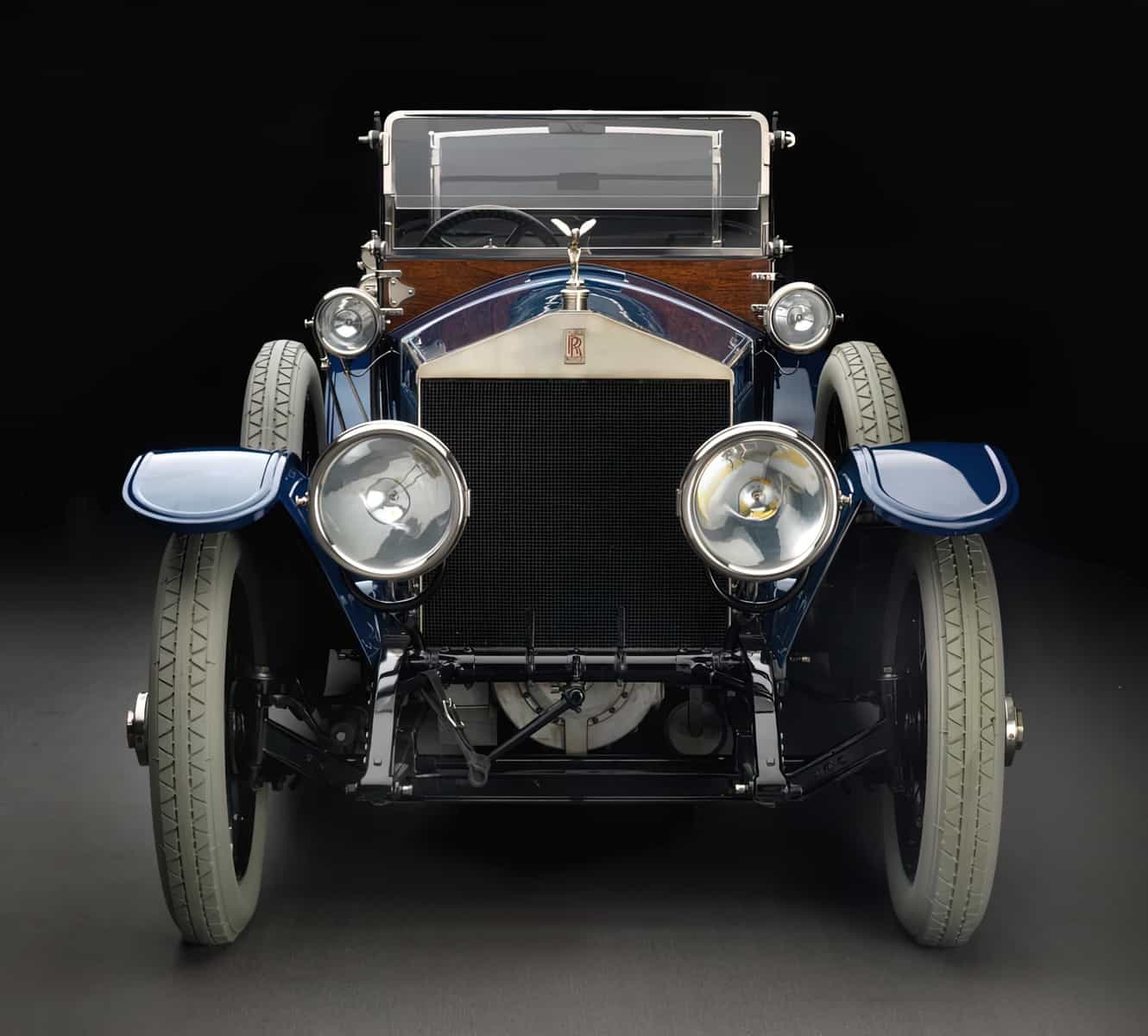
As the old adage goes, “they don’t make them like they used to,” and they don’t operate the way they used to either. What’s in play here is the concept of mastery. Mastery is one of the seven pathways by which we engage with historical automobiles. The other six are: nostalgia, aesthetics, history, technology, competition, and fellowship. Mastery is the attraction of interacting with the automobile as active, vibrant, and working matter. Expert operation, tuning, maintenance, and just the sheer pleasure of driving are all aspects of mastery. Starting a pre-war Rolls-Royce on the crank from cold is a practical example.
Mastery is the ability to care for that automobile through correct praxis, the necessary strategies and actions to prepare, use, and maintain a specific automobile in all of its idiosyncratic technical complexity. It is this ability to care for that artifact in this physical way that creates deep understanding of the mechanical confection that is any given automobile. Mastery is a way to interact with the automobile as a dynamic archive of obsolete practices and skills. And, ultimately, it is a way to connect to the known and unknown geniuses who designed, built, and maintained the car in the past.

Failing to downshift early enough while descending a steep hill on a narrow winding road in the course of a modern-day Brass Era tour is a very visceral way to appreciate the concerns and behaviors of those long-dead motorists. Indeed, when I realized that the time for a downshift into second gear had passed about fifty yards back, and that I might be encountering that long-gone chauffeur on an astral plane in the next few moments, I received a wonderful appreciation of the role steep hills played in motoring and in selecting motoring routes in the 1900s. Now I know why early road maps often called out the steepness of hills and declivities along the way.
Back to the present. Once I realized that the Rolls was almost imperceptibly beginning to take control on the downslope, I pulled on the big, nickel brake lever as if to bend it, and, yes, stood on the drive shaft brake “with both feet.” Time slowed, and seconds dragged by until I realized that, ever so gradually, my forward career was slowing. Like lightning, I stuffed a double-clutch downshift into second. The Rolls engine didn’t do anything so crude as to roar, but it did express its disapprobation at my stupidity, and then quickly, all was serene once more.
Top image: 1914 Rolls-Royce Silver Ghost. Photo: Peter Harholdt.



![alfa gtz perfectly imperfect webannerl[1]](https://automedia.revsinstitute.org/wp-content/uploads/2024/08/Alfa-GTZ-Perfectly-Imperfect-webannerl1-uai-1200x800.jpg)
